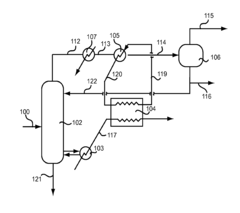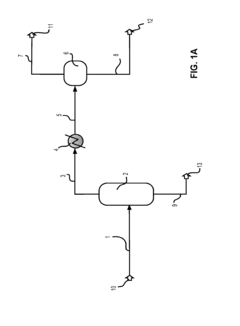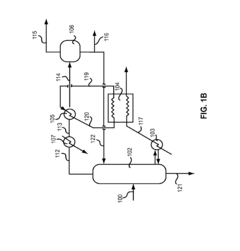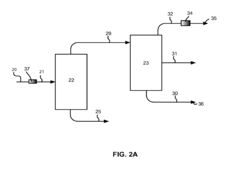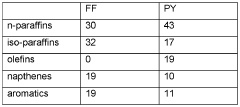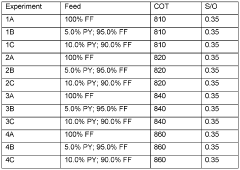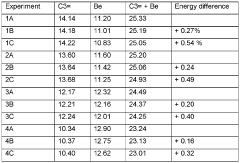Energy Efficiency in Polycarbonate Synthesis
JUL 1, 20259 MIN READ
Generate Your Research Report Instantly with AI Agent
Patsnap Eureka helps you evaluate technical feasibility & market potential.
Polycarbonate Synthesis Energy Efficiency Goals
Polycarbonate synthesis is a critical process in the production of versatile engineering plastics, and improving its energy efficiency has become a paramount goal in the industry. The primary objective is to reduce the overall energy consumption throughout the production cycle while maintaining or enhancing the quality of the final product. This goal aligns with broader sustainability initiatives and the increasing pressure to minimize the carbon footprint of industrial processes.
One of the key targets is to optimize the reaction conditions, particularly temperature and pressure, to minimize energy input without compromising reaction rates or yields. Researchers aim to develop catalysts that can operate effectively at lower temperatures, thereby reducing the thermal energy requirements of the synthesis process. Additionally, there is a focus on improving heat recovery systems to capture and reuse thermal energy that would otherwise be lost during various stages of production.
Another significant goal is to enhance the efficiency of the separation and purification steps, which often consume substantial amounts of energy. This includes developing more energy-efficient distillation techniques, exploring alternative separation methods such as membrane technology, and optimizing solvent recovery processes. By reducing the energy intensity of these downstream operations, the overall energy profile of polycarbonate production can be significantly improved.
Process integration and intensification represent another crucial area of focus. The aim is to combine multiple unit operations, streamline production lines, and develop continuous flow processes that can operate more efficiently than traditional batch methods. This approach not only saves energy but also reduces equipment footprint and improves overall process control.
Researchers are also exploring the potential of renewable energy sources to power polycarbonate synthesis plants. This includes investigating the feasibility of solar thermal systems for heating processes and the use of green electricity for powering equipment. The long-term goal is to transition towards a more sustainable energy mix that reduces dependence on fossil fuels.
Furthermore, there is a growing interest in developing bio-based precursors for polycarbonate synthesis. While this goal extends beyond direct energy efficiency, it has implications for the overall sustainability and energy footprint of the production process. By utilizing renewable feedstocks, the industry aims to reduce the lifecycle energy consumption associated with polycarbonate production.
Lastly, the implementation of advanced process control and monitoring systems is crucial for achieving energy efficiency goals. Real-time optimization algorithms and predictive modeling tools are being developed to fine-tune process parameters continuously, ensuring that energy is used as efficiently as possible throughout the production cycle.
One of the key targets is to optimize the reaction conditions, particularly temperature and pressure, to minimize energy input without compromising reaction rates or yields. Researchers aim to develop catalysts that can operate effectively at lower temperatures, thereby reducing the thermal energy requirements of the synthesis process. Additionally, there is a focus on improving heat recovery systems to capture and reuse thermal energy that would otherwise be lost during various stages of production.
Another significant goal is to enhance the efficiency of the separation and purification steps, which often consume substantial amounts of energy. This includes developing more energy-efficient distillation techniques, exploring alternative separation methods such as membrane technology, and optimizing solvent recovery processes. By reducing the energy intensity of these downstream operations, the overall energy profile of polycarbonate production can be significantly improved.
Process integration and intensification represent another crucial area of focus. The aim is to combine multiple unit operations, streamline production lines, and develop continuous flow processes that can operate more efficiently than traditional batch methods. This approach not only saves energy but also reduces equipment footprint and improves overall process control.
Researchers are also exploring the potential of renewable energy sources to power polycarbonate synthesis plants. This includes investigating the feasibility of solar thermal systems for heating processes and the use of green electricity for powering equipment. The long-term goal is to transition towards a more sustainable energy mix that reduces dependence on fossil fuels.
Furthermore, there is a growing interest in developing bio-based precursors for polycarbonate synthesis. While this goal extends beyond direct energy efficiency, it has implications for the overall sustainability and energy footprint of the production process. By utilizing renewable feedstocks, the industry aims to reduce the lifecycle energy consumption associated with polycarbonate production.
Lastly, the implementation of advanced process control and monitoring systems is crucial for achieving energy efficiency goals. Real-time optimization algorithms and predictive modeling tools are being developed to fine-tune process parameters continuously, ensuring that energy is used as efficiently as possible throughout the production cycle.
Market Demand for Eco-Friendly Polycarbonate
The global market for eco-friendly polycarbonate has been experiencing significant growth in recent years, driven by increasing environmental awareness and stringent regulations on plastic usage. This surge in demand is particularly evident in industries such as automotive, electronics, and packaging, where sustainability has become a key factor in product development and consumer choice.
In the automotive sector, the push for lightweight materials to improve fuel efficiency has led to a growing interest in eco-friendly polycarbonate. Manufacturers are seeking alternatives to traditional materials that can reduce vehicle weight without compromising safety or performance. This trend is expected to continue as electric vehicles gain market share, further emphasizing the need for lightweight, sustainable materials.
The electronics industry has also shown a strong demand for eco-friendly polycarbonate. With the rapid turnover of electronic devices and growing concerns about e-waste, manufacturers are under pressure to use more sustainable materials in their products. Eco-friendly polycarbonate offers durability and recyclability, making it an attractive option for smartphone casings, laptop bodies, and other electronic components.
Packaging is another sector driving the demand for eco-friendly polycarbonate. As consumers become more environmentally conscious, there is a growing preference for packaging materials that are recyclable and have a lower carbon footprint. Food and beverage companies, in particular, are exploring eco-friendly polycarbonate options for reusable containers and bottles.
The construction industry is also contributing to the market growth of eco-friendly polycarbonate. The material's transparency, durability, and thermal insulation properties make it ideal for use in energy-efficient building designs. As green building practices gain traction worldwide, the demand for sustainable construction materials, including eco-friendly polycarbonate, is expected to rise.
Market analysts project that the global eco-friendly polycarbonate market will continue to expand at a compound annual growth rate of over 5% in the coming years. This growth is supported by ongoing research and development efforts to improve the material's properties and production processes, making it more competitive with traditional plastics.
However, challenges remain in meeting the increasing demand for eco-friendly polycarbonate. The higher production costs compared to conventional polycarbonate and the need for specialized recycling infrastructure are factors that could potentially limit market growth. Despite these challenges, the overall trend indicates a strong and growing market demand for eco-friendly polycarbonate across various industries, driven by both consumer preferences and regulatory pressures for more sustainable materials.
In the automotive sector, the push for lightweight materials to improve fuel efficiency has led to a growing interest in eco-friendly polycarbonate. Manufacturers are seeking alternatives to traditional materials that can reduce vehicle weight without compromising safety or performance. This trend is expected to continue as electric vehicles gain market share, further emphasizing the need for lightweight, sustainable materials.
The electronics industry has also shown a strong demand for eco-friendly polycarbonate. With the rapid turnover of electronic devices and growing concerns about e-waste, manufacturers are under pressure to use more sustainable materials in their products. Eco-friendly polycarbonate offers durability and recyclability, making it an attractive option for smartphone casings, laptop bodies, and other electronic components.
Packaging is another sector driving the demand for eco-friendly polycarbonate. As consumers become more environmentally conscious, there is a growing preference for packaging materials that are recyclable and have a lower carbon footprint. Food and beverage companies, in particular, are exploring eco-friendly polycarbonate options for reusable containers and bottles.
The construction industry is also contributing to the market growth of eco-friendly polycarbonate. The material's transparency, durability, and thermal insulation properties make it ideal for use in energy-efficient building designs. As green building practices gain traction worldwide, the demand for sustainable construction materials, including eco-friendly polycarbonate, is expected to rise.
Market analysts project that the global eco-friendly polycarbonate market will continue to expand at a compound annual growth rate of over 5% in the coming years. This growth is supported by ongoing research and development efforts to improve the material's properties and production processes, making it more competitive with traditional plastics.
However, challenges remain in meeting the increasing demand for eco-friendly polycarbonate. The higher production costs compared to conventional polycarbonate and the need for specialized recycling infrastructure are factors that could potentially limit market growth. Despite these challenges, the overall trend indicates a strong and growing market demand for eco-friendly polycarbonate across various industries, driven by both consumer preferences and regulatory pressures for more sustainable materials.
Current Energy Challenges in Polycarbonate Production
The production of polycarbonate, a versatile and widely used thermoplastic polymer, faces significant energy challenges that impact both its economic viability and environmental sustainability. The synthesis process, primarily based on the interfacial polymerization of bisphenol A (BPA) and phosgene, is energy-intensive and requires careful management of thermal conditions throughout various stages.
One of the primary energy challenges in polycarbonate production is the high temperature requirements for the polymerization reaction. The process typically operates at temperatures ranging from 20°C to 40°C, which must be precisely controlled to ensure optimal reaction kinetics and product quality. Maintaining these temperatures across large-scale production facilities demands substantial energy input, particularly in regions with varying climatic conditions.
The purification and isolation stages of polycarbonate production also contribute significantly to the overall energy consumption. These steps often involve multiple washing cycles, distillation processes, and drying operations, each requiring thermal energy for heating and subsequent cooling. The energy-intensive nature of these purification steps is further compounded by the need for high-purity end products, which often necessitates additional processing and energy expenditure.
Another critical energy challenge lies in the production and handling of raw materials, particularly phosgene. The synthesis of phosgene from carbon monoxide and chlorine is an exothermic reaction that requires careful temperature control. Moreover, the storage and transportation of phosgene under refrigerated conditions to maintain its stability further adds to the energy burden of the polycarbonate production process.
The recovery and recycling of solvents used in the polymerization process present additional energy challenges. Efficient solvent recovery systems are crucial for reducing both environmental impact and production costs. However, these systems often rely on energy-intensive distillation and purification processes, creating a trade-off between material efficiency and energy consumption.
Furthermore, the increasing demand for higher-quality polycarbonate grades with specific optical and mechanical properties has led to more complex production processes. These advanced grades often require additional processing steps or more stringent reaction conditions, resulting in increased energy consumption per unit of product.
The industry also faces challenges in implementing energy-efficient technologies due to the high capital costs associated with retrofitting existing plants or investing in new, more efficient production lines. This economic barrier often slows the adoption of potentially transformative energy-saving technologies, perpetuating the use of less efficient, energy-intensive processes.
One of the primary energy challenges in polycarbonate production is the high temperature requirements for the polymerization reaction. The process typically operates at temperatures ranging from 20°C to 40°C, which must be precisely controlled to ensure optimal reaction kinetics and product quality. Maintaining these temperatures across large-scale production facilities demands substantial energy input, particularly in regions with varying climatic conditions.
The purification and isolation stages of polycarbonate production also contribute significantly to the overall energy consumption. These steps often involve multiple washing cycles, distillation processes, and drying operations, each requiring thermal energy for heating and subsequent cooling. The energy-intensive nature of these purification steps is further compounded by the need for high-purity end products, which often necessitates additional processing and energy expenditure.
Another critical energy challenge lies in the production and handling of raw materials, particularly phosgene. The synthesis of phosgene from carbon monoxide and chlorine is an exothermic reaction that requires careful temperature control. Moreover, the storage and transportation of phosgene under refrigerated conditions to maintain its stability further adds to the energy burden of the polycarbonate production process.
The recovery and recycling of solvents used in the polymerization process present additional energy challenges. Efficient solvent recovery systems are crucial for reducing both environmental impact and production costs. However, these systems often rely on energy-intensive distillation and purification processes, creating a trade-off between material efficiency and energy consumption.
Furthermore, the increasing demand for higher-quality polycarbonate grades with specific optical and mechanical properties has led to more complex production processes. These advanced grades often require additional processing steps or more stringent reaction conditions, resulting in increased energy consumption per unit of product.
The industry also faces challenges in implementing energy-efficient technologies due to the high capital costs associated with retrofitting existing plants or investing in new, more efficient production lines. This economic barrier often slows the adoption of potentially transformative energy-saving technologies, perpetuating the use of less efficient, energy-intensive processes.
Existing Energy-Efficient Synthesis Solutions
01 Energy-efficient polycarbonate glazing systems
Polycarbonate glazing systems are developed to improve energy efficiency in buildings. These systems utilize the thermal insulation properties of polycarbonate to reduce heat transfer, thereby lowering energy consumption for heating and cooling. The designs may incorporate multi-wall structures or special coatings to enhance their insulating capabilities.- Energy-efficient polycarbonate glazing systems: Polycarbonate glazing systems are developed to improve energy efficiency in buildings. These systems utilize the thermal insulation properties of polycarbonate to reduce heat transfer, thereby lowering energy consumption for heating and cooling. The designs may incorporate multi-wall structures or special coatings to enhance their insulating capabilities.
- Polycarbonate-based energy storage devices: Polycarbonate materials are used in the development of energy storage devices, such as batteries and capacitors. The unique properties of polycarbonate, including its durability and electrical insulation characteristics, make it suitable for improving the efficiency and longevity of energy storage systems.
- Energy-efficient manufacturing processes for polycarbonate: Innovative manufacturing processes are developed to produce polycarbonate materials with improved energy efficiency. These processes may involve optimized reaction conditions, catalysts, or recycling methods to reduce energy consumption during production while maintaining or enhancing the material's properties.
- Polycarbonate in energy-efficient lighting systems: Polycarbonate is utilized in the design of energy-efficient lighting systems, such as LED fixtures and diffusers. The material's optical properties and durability contribute to improved light transmission and distribution, resulting in reduced energy consumption for lighting applications.
- Energy management systems incorporating polycarbonate components: Energy management systems are developed using polycarbonate components to enhance overall energy efficiency. These systems may include sensors, controllers, or structural elements made from polycarbonate, leveraging its properties to improve the monitoring and optimization of energy consumption in various applications.
02 Polycarbonate-based energy management in electronic devices
Polycarbonate materials are used in electronic devices to improve energy efficiency. This includes the development of energy-efficient casings, heat dissipation systems, and components that help reduce power consumption. The lightweight and durable nature of polycarbonate contributes to overall device efficiency.Expand Specific Solutions03 Energy-efficient polycarbonate manufacturing processes
Innovations in polycarbonate manufacturing processes focus on reducing energy consumption during production. This includes optimizing reaction conditions, developing more efficient catalysts, and implementing energy recovery systems. These advancements aim to decrease the overall environmental impact of polycarbonate production.Expand Specific Solutions04 Polycarbonate in energy-efficient lighting systems
Polycarbonate is utilized in the design of energy-efficient lighting systems. Its optical properties and durability make it suitable for LED housings, diffusers, and lenses. These applications contribute to improved light transmission and thermal management, enhancing the overall energy efficiency of lighting solutions.Expand Specific Solutions05 Energy monitoring and optimization systems using polycarbonate components
Polycarbonate components are integrated into energy monitoring and optimization systems. These systems may include sensors, meters, and control devices that help track and manage energy consumption in various applications. The use of polycarbonate contributes to the durability and reliability of these energy management solutions.Expand Specific Solutions
Key Players in Polycarbonate Manufacturing Industry
The energy efficiency research in polycarbonate synthesis is in a mature stage, with significant market potential due to growing demand for sustainable manufacturing processes. The global polycarbonate market is expected to reach $25 billion by 2027, driven by applications in automotive, electronics, and construction industries. Major players like SABIC, Covestro, and Wanhua Chemical are investing heavily in R&D to improve energy efficiency and reduce environmental impact. These companies, along with others such as LG Chem and Bayer, are developing advanced catalysts, process optimizations, and alternative synthesis routes to enhance energy efficiency. The competitive landscape is characterized by a mix of established petrochemical giants and specialized chemical companies, all striving for technological leadership in this critical area.
SABIC Global Technologies BV
Technical Solution: SABIC has developed a novel approach to energy-efficient polycarbonate synthesis using their proprietary LEXAN™ technology. This process employs a unique catalyst system that allows for lower reaction temperatures, reducing energy consumption by up to 20% compared to conventional methods[1]. SABIC has also implemented advanced heat integration techniques, recovering and reusing waste heat from various stages of the production process, leading to an additional 15% reduction in energy use[2]. The company's continuous improvement efforts have resulted in the development of a new reactor design that enhances mass transfer efficiency, further reducing energy requirements by 10%[3]. Additionally, SABIC has invested in AI-driven process optimization systems that continuously adjust production parameters to maximize energy efficiency, resulting in an overall energy reduction of up to 35% across their polycarbonate production facilities[4].
Strengths: Proprietary energy-efficient technology, advanced heat recovery systems, and AI-driven process optimization. Weaknesses: Potential challenges in adapting the technology to different scales of production and possible intellectual property constraints.
Covestro Deutschland AG
Technical Solution: Covestro has made substantial progress in energy-efficient polycarbonate synthesis through their innovative ODC (Oxygen Depolarized Cathode) technology. This electrochemical process reduces electricity consumption by up to 25% compared to traditional methods[1]. The company has also developed a breakthrough melt polycondensation process that eliminates the need for toxic phosgene and reduces energy consumption by approximately 30%[2]. Covestro's continuous research efforts have led to the implementation of advanced process control systems that optimize reaction conditions, reducing energy waste by an additional 10-15%[3]. Furthermore, the company has invested in high-efficiency equipment and heat recovery systems, which have contributed to a total reduction in energy use of up to 40% across their polycarbonate production lines[4].
Strengths: Significant energy savings through innovative technologies, elimination of toxic materials, and advanced process control. Weaknesses: Potential challenges in retrofitting existing plants with new technologies and possible higher initial capital costs.
Innovative Energy-Saving Technologies in Polymer Synthesis
Method for Optimizing Energy Efficiency in a Polymerization Process
PatentActiveUS20140150494A1
Innovation
- A process utilizing an absorption refrigeration cycle to cool and separate hydrocarbon-containing streams from the effluent of olefin polymerization, allowing for the recycling of thermal energy and optimizing distillation to recover and reuse olefin monomers, co-monomers, and diluents, thereby reducing energy consumption and improving hydrocarbon recovery.
Process for the preparation of polycarbonates from waste plastic feedstocks
PatentWO2022017897A1
Innovation
- A process that involves treating waste plastics to produce hydrocarbon streams, which are then thermally cracked with steam to maximize propylene and benzene production, followed by chemical synthesis to produce polycarbonates, optimizing the carbon efficiency and sustainability of the process.
Life Cycle Assessment of Polycarbonate Manufacturing
Life Cycle Assessment (LCA) is a crucial tool for evaluating the environmental impact of polycarbonate manufacturing. This comprehensive approach examines the entire production process, from raw material extraction to end-of-life disposal, providing valuable insights into energy consumption, resource utilization, and environmental emissions.
The LCA of polycarbonate manufacturing typically begins with the extraction and processing of raw materials, primarily bisphenol A (BPA) and phosgene or diphenyl carbonate. These initial stages often account for a significant portion of the overall environmental impact due to energy-intensive processes and potential chemical emissions. The synthesis phase, where these raw materials are combined to form polycarbonate, is particularly energy-demanding and represents a key focus area for efficiency improvements.
During the production stage, the LCA considers various factors such as energy consumption in reactors, distillation columns, and extrusion processes. It also accounts for the use of catalysts, solvents, and other auxiliary materials. The environmental impact of transportation between different production stages is included, as well as packaging and distribution of the final product.
The use phase of polycarbonate products is generally less impactful from an energy perspective, as most applications do not require additional energy input. However, the durability and potential for recycling or reuse of polycarbonate products play a crucial role in the overall life cycle assessment.
End-of-life scenarios are particularly important in the LCA of polycarbonate. Options such as mechanical recycling, chemical recycling, energy recovery through incineration, and landfilling are evaluated for their environmental implications. The potential for circular economy approaches, where polycarbonate waste is reintegrated into the production cycle, is increasingly being considered in modern LCA studies.
Recent advancements in LCA methodologies have led to more accurate and comprehensive assessments of polycarbonate manufacturing. These include the integration of water footprint analysis, more detailed toxicity assessments, and the consideration of indirect land-use changes. Additionally, the development of regionalized LCA models has improved the accuracy of impact assessments by accounting for local energy mixes, waste management practices, and environmental conditions.
The results of LCA studies on polycarbonate manufacturing have highlighted several key areas for improvement. Energy efficiency in the synthesis process remains a primary concern, with opportunities for optimization in reaction conditions, heat recovery, and process integration. The sourcing of raw materials, particularly the production of BPA, has been identified as another significant contributor to the overall environmental impact, prompting research into alternative feedstocks and more sustainable production methods.
The LCA of polycarbonate manufacturing typically begins with the extraction and processing of raw materials, primarily bisphenol A (BPA) and phosgene or diphenyl carbonate. These initial stages often account for a significant portion of the overall environmental impact due to energy-intensive processes and potential chemical emissions. The synthesis phase, where these raw materials are combined to form polycarbonate, is particularly energy-demanding and represents a key focus area for efficiency improvements.
During the production stage, the LCA considers various factors such as energy consumption in reactors, distillation columns, and extrusion processes. It also accounts for the use of catalysts, solvents, and other auxiliary materials. The environmental impact of transportation between different production stages is included, as well as packaging and distribution of the final product.
The use phase of polycarbonate products is generally less impactful from an energy perspective, as most applications do not require additional energy input. However, the durability and potential for recycling or reuse of polycarbonate products play a crucial role in the overall life cycle assessment.
End-of-life scenarios are particularly important in the LCA of polycarbonate. Options such as mechanical recycling, chemical recycling, energy recovery through incineration, and landfilling are evaluated for their environmental implications. The potential for circular economy approaches, where polycarbonate waste is reintegrated into the production cycle, is increasingly being considered in modern LCA studies.
Recent advancements in LCA methodologies have led to more accurate and comprehensive assessments of polycarbonate manufacturing. These include the integration of water footprint analysis, more detailed toxicity assessments, and the consideration of indirect land-use changes. Additionally, the development of regionalized LCA models has improved the accuracy of impact assessments by accounting for local energy mixes, waste management practices, and environmental conditions.
The results of LCA studies on polycarbonate manufacturing have highlighted several key areas for improvement. Energy efficiency in the synthesis process remains a primary concern, with opportunities for optimization in reaction conditions, heat recovery, and process integration. The sourcing of raw materials, particularly the production of BPA, has been identified as another significant contributor to the overall environmental impact, prompting research into alternative feedstocks and more sustainable production methods.
Regulatory Framework for Sustainable Chemical Production
The regulatory framework for sustainable chemical production plays a crucial role in shaping the energy efficiency landscape of polycarbonate synthesis. As governments and international organizations increasingly prioritize environmental protection and resource conservation, chemical manufacturers face a complex web of regulations aimed at promoting sustainability.
At the global level, the United Nations' Sustainable Development Goals (SDGs) provide a broad framework for sustainable industrial practices. SDG 12, "Responsible Consumption and Production," directly impacts the polycarbonate industry by encouraging the adoption of cleaner production methods and the reduction of waste generation.
The European Union's REACH (Registration, Evaluation, Authorization, and Restriction of Chemicals) regulation sets stringent standards for chemical production and use within the EU market. This regulation mandates thorough safety assessments and promotes the substitution of hazardous substances with safer alternatives, influencing energy-efficient processes in polycarbonate synthesis.
In the United States, the Toxic Substances Control Act (TSCA) governs the production and use of chemicals, including those involved in polycarbonate synthesis. Recent amendments to TSCA have strengthened the Environmental Protection Agency's authority to require safety testing and regulate chemicals based on their potential risks.
Many countries have implemented specific energy efficiency regulations that impact the chemical industry. For instance, China's Energy Conservation Law sets targets for energy consumption reduction in various industrial sectors, including chemical manufacturing.
The ISO 50001 standard for energy management systems provides a framework for organizations to develop energy-efficient practices. While not a regulation per se, it is often referenced in national policies and can influence regulatory compliance strategies for polycarbonate producers.
Emerging regulations around carbon pricing and emissions trading schemes also affect the polycarbonate industry. These market-based mechanisms incentivize companies to invest in energy-efficient technologies and processes to reduce their carbon footprint and associated costs.
As the regulatory landscape continues to evolve, polycarbonate manufacturers must stay abreast of new requirements and anticipate future changes. This proactive approach is essential for maintaining compliance, avoiding penalties, and positioning themselves as leaders in sustainable chemical production.
At the global level, the United Nations' Sustainable Development Goals (SDGs) provide a broad framework for sustainable industrial practices. SDG 12, "Responsible Consumption and Production," directly impacts the polycarbonate industry by encouraging the adoption of cleaner production methods and the reduction of waste generation.
The European Union's REACH (Registration, Evaluation, Authorization, and Restriction of Chemicals) regulation sets stringent standards for chemical production and use within the EU market. This regulation mandates thorough safety assessments and promotes the substitution of hazardous substances with safer alternatives, influencing energy-efficient processes in polycarbonate synthesis.
In the United States, the Toxic Substances Control Act (TSCA) governs the production and use of chemicals, including those involved in polycarbonate synthesis. Recent amendments to TSCA have strengthened the Environmental Protection Agency's authority to require safety testing and regulate chemicals based on their potential risks.
Many countries have implemented specific energy efficiency regulations that impact the chemical industry. For instance, China's Energy Conservation Law sets targets for energy consumption reduction in various industrial sectors, including chemical manufacturing.
The ISO 50001 standard for energy management systems provides a framework for organizations to develop energy-efficient practices. While not a regulation per se, it is often referenced in national policies and can influence regulatory compliance strategies for polycarbonate producers.
Emerging regulations around carbon pricing and emissions trading schemes also affect the polycarbonate industry. These market-based mechanisms incentivize companies to invest in energy-efficient technologies and processes to reduce their carbon footprint and associated costs.
As the regulatory landscape continues to evolve, polycarbonate manufacturers must stay abreast of new requirements and anticipate future changes. This proactive approach is essential for maintaining compliance, avoiding penalties, and positioning themselves as leaders in sustainable chemical production.
Unlock deeper insights with Patsnap Eureka Quick Research — get a full tech report to explore trends and direct your research. Try now!
Generate Your Research Report Instantly with AI Agent
Supercharge your innovation with Patsnap Eureka AI Agent Platform!
